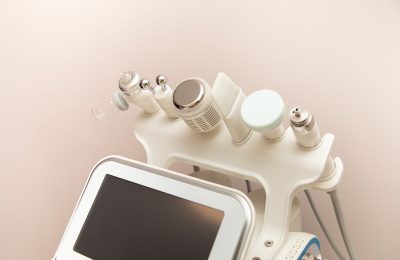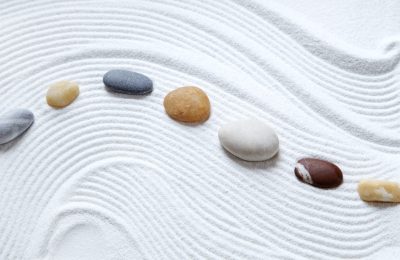Driven by a facilitated digitization of the world around us, the spa industry is currently evolving with advanced technologies in…
Great for the skin good for the planet
The popularity of sustainable skincare products has seen a sharp rise with consumers flocking to products that are good for the skin—and the planet.
According to a report shared by First Insight, a global predictive analytics firm, in the last few years, preference for sustainable brands had increased by nearly 25%. According to the study, nearly 90% of gen X consumers—those in their 40s and 50s—said they’d be willing to spend an extra 10% or more for sustainable products, compared to just over 34% two years ago. And they’re influencing the shopping habits of the older generation of boomers.
A desire to help the environment was found to be the primary reason consumers purchase sustainable products and brands. Almost 30% say they want to improve the environment, with 23% wishing to reduce production waste, 22% wishing to reduce their carbon footprints, and 17% concerned with animal welfare. Only 7% agree that they prefer to shop sustainably due to social signalling; in other words, to be recognized as being a good citizen.
Several skincare brands sold in Canada have heard the message, aligning themselves with consumers by offering sustainable products and, in the process, gaining a stronger hold on the market.
“Sustainability in beauty is increasingly becoming a consumer priority across the globe, with many choosing to buy fewer plastic products and expecting brands to make their products more sustainable—and this has been emphasized by the pandemic,” says Alex Fisher, associate director for Beauty & Personal Care at Mintel, a global market research firm.
This expectation is pushing beauty brands toward new sustainable innovations, such as ethical sourcing, carbon neutrality, and reusable or refillable packaging solutions.
Wrapping up sustainability
More than 120 billion units of packaging are produced every year by the global cosmetics industry. The cardboard that envelops perfumes, serums, and moisturizers contributes to the loss of 18 million acres of forest each year, according to Zero Waste Week, an annual awareness campaign.
At O Cosmedics , packaging has been a focus for many years, but packaging suppliers lagged behind until recently. “As a brand, we’ve been researching options around recyclable and reduced packaging for a number of years,” says CEO Maria Enna-Cocciolone. The company recently unveiled 13 products in new packaging. “This new packaging has only one wall, which means we’re reducing our packaging as much as 43.5%.”
O Cosmedics uses active ingredients in functional doses that require airless packaging to preserve the product shelf life. And, while at this stage the packaging is not recyclable, the company remains committed to searching for other options in promoting a healthier environment.
In the past few years, there has been growing pressure on beauty brands to create reusable or refillable packaging formats—like the Water-Lock Moisturizer refill pods offered by Tata Harper.
At Dazzle Dry, a leading nail care company popular in some Canadian spas, products are shipped using eco-friendly materials such as biodegradable clamshell packages, envelopes made from recycled paper, and protective craft paper. The company’s manufacturing facilities employ rigorous recycling methods to reduce landfill waste.
Revitalizing Earth’s lungs
As a vital source of oxygen on the planet, trees are considered to be the lungs of the Earth; they keep erosion at bay and play an important role in many ecosystems. Among several global beauty brands committed to protecting the forest canopy—like Origins and Phyto, which each teamed up with eco-advocates to plant trees—Eminence Organic Skin Care recently launched a campaign, Forests for the Future, in partnership with the non-profit organization Trees for the Future, to help train farmers in developing countries on how to build productive and sustainable forest gardens. The company plants a tree for every product sold to restore these forests.
To Kerry Werner, spa director at Toronto’s Park Hyatt Stillwater Spa, sustainability is an important aspect when ordering the spa’s products. It’s one of the reasons she has partnered for years with Aromatherapy Associates, a leading provider of essential oils. “Not only are their products exquisite, they’re also a very sustainable company,” she explains. “They believe in a lot of the same values that we believe in as a company, as well: sustainability, fair trade, taking care of your team, reducing packaging, reducing waste, and reducing water waste. And their products are just gorgeous. They have a blend for everything.”
At Beauty Through Balance, a spa line carried at award-winning spas and hotels, company founder Sherina Jamal explains, “We are one of the only companies that are hand-harvesting sustainably in B.C. and working with environmentalists in the harvesting of seaweed. All this has a very positive effect on the local community and no negative impact on the environment or ecosystem. It’s very unique to us.”
Her company’s Macrocystis integrifolia Pacific seaweed (large brown kelp) is harvested by hand from remote areas of the northern coast of British Columbia, and all harvesting is 100% sustainable. Specific rules and policies are followed that protect the kelp beds during harvesting. Both government and Indigenous oversights are strictly enforced, and only a small window of harvesting is allowed during the course of the year. “This ensures maximum protection of the amazing sea life that lives in and around the beds,” explains Jamal.
Regulated pruning methods allow only nine feet to be pruned from the top of the plant, which regenerates and grows back in a few days, making it one of the most sustainable plants in the world.
The process includes transforming the harvested kelp tips into a thick, concentrated pulp that retains the full nutritional value of the original kelp in live raw form. “We were the first skincare company in Canada to incorporate this unique form of raw live kelp into sophisticated and therapeutic skincare formulations for spas,” says Jamal. Unlike other methods, during this process, none of the kelp tip is wasted.
The company’s same respect for environmental stewardship applies to a line of skincare products developed from organically grown Chaga mushrooms harvested from deep in the B.C. forests; raw, hand-harvested sustainable organic acai berries from the Amazon rainforest; and a variety of plant extracts.
Honouring Mother Earth
Sustainability lies at the core of Hypnologie Beauty, a plant-based skincare line that integrates Ayurvedic knowledge into its products. “From our organic farm in the Himalayas to our customers’ skin, sustainability is a core pillar of our company’s mission,” explains founder Jigyasa Sharma.
“We use only the purest plant ingredients in our products grown in the lush forest ecosystem in the Himalayan valleys by the Ganges River. Our ingredients—such as royal saffron, rich jojoba, and healing Babchi—are cultivated at our fair trade organic farm by our talented team of agronomists,” she explains.
Once harvested, the company uses minimal processing at the production level to reduce its carbon footprint while retaining the efficacy of the ingredients. “At the manufacturing level, we utilize glass packaging that is, at minimum, 90% recyclable,” she adds.
While Sharma admits that it’s more costly to be environmentally conscious, she remains adamant that it is crucial. “We only have one planet, so we must do everything we can to honour our Mother Earth. We’ve noticed our clients have definitely appreciated our approach to sustainability. Thankfully, many more consumers are interested in green and clean skincare in our modern age.”
From cleansing foams like Dr. Barbara Sturm’s Enzyme Cleanser, which conserves water because it needs only a few drops to activate, to products like Sukin Naturals that leave a carbon-neutral footprint, skincare products in Canada—and, indeed, in the entire world—are doing their part for the environment.




